Did Denisovans look like humans? Mystery deepens over what the elusive ancient human ancestor looked like as study finds their fingers were almost identical to ours
- Part of a finger bone was discovered in the Denisova cave in 2010
- Different fragment of the same bone has now been found, analysed and imaged
- Revealed a very similar appearance and shape to that of Homo sapiens
- Belonged to a teenage girl and was the little finger on her right hand
Fingers of Denisovans, the elusive ancient human ancestor, bear a striking resemblance to the digits of modern-day humans.
The findings come as a surprise to experts, as the species is known to be a closer genetic match to Neanderthals than Homo sapiens.
Little is known about Denisovans, who lived in an Asian cave 100,000 years ago, as very few remains have ever been identified.
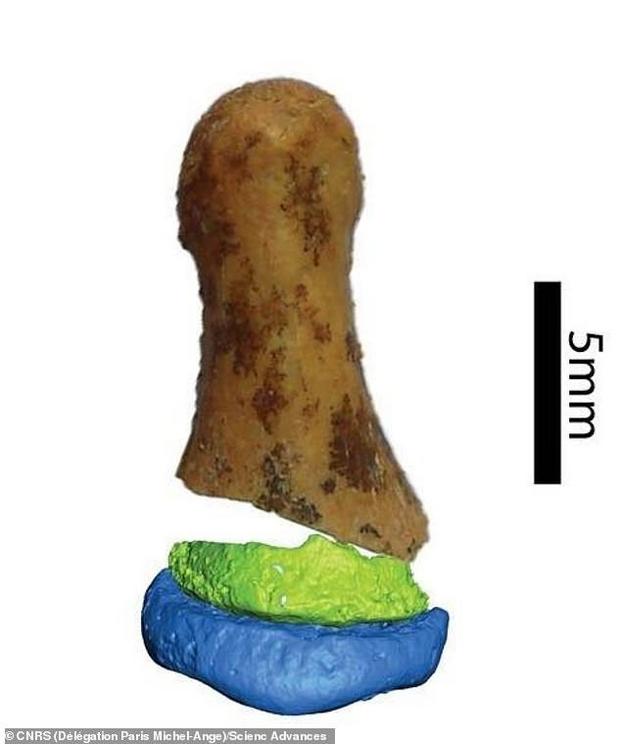 Analysis and imaging of the distal section of a finger bone (pictured) revealed it is another fragment of the same bone which initially allowed researchers to prove Denisovans existed. The found the digit more similar to humans than neanderthals
Analysis and imaging of the distal section of a finger bone (pictured) revealed it is another fragment of the same bone which initially allowed researchers to prove Denisovans existed. The found the digit more similar to humans than neanderthals
The species was initially discovered in 2010 after genomic analysis of a single finger fragment revealed the hominid's existence.,
It also found that they split from a common ancestor of modern humans about 600,000 years ago.
Their lineage and the rest of the Homo genus split from this point, but little is known about them except for the fact they inhabited a cave in Siberia, dubbed Denisova.
The cave's name was adopted by scientists and the species was penned in formally.
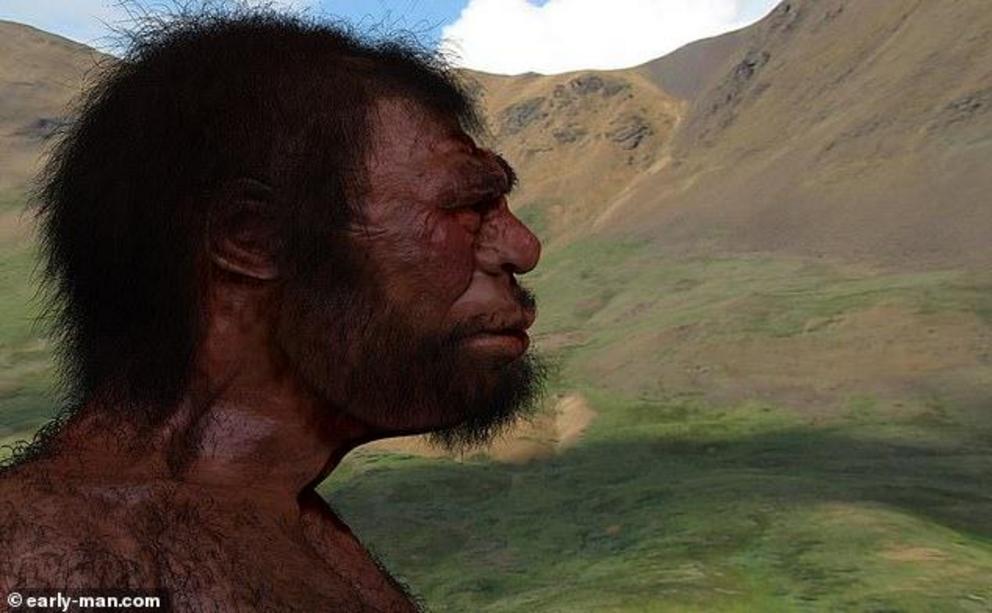 The existence of this ancient group is suggested by the genetic analysis of Denisovan (pictured, artist's impression) and Neanderthal remains, along with modern human genomes
The existence of this ancient group is suggested by the genetic analysis of Denisovan (pictured, artist's impression) and Neanderthal remains, along with modern human genomes
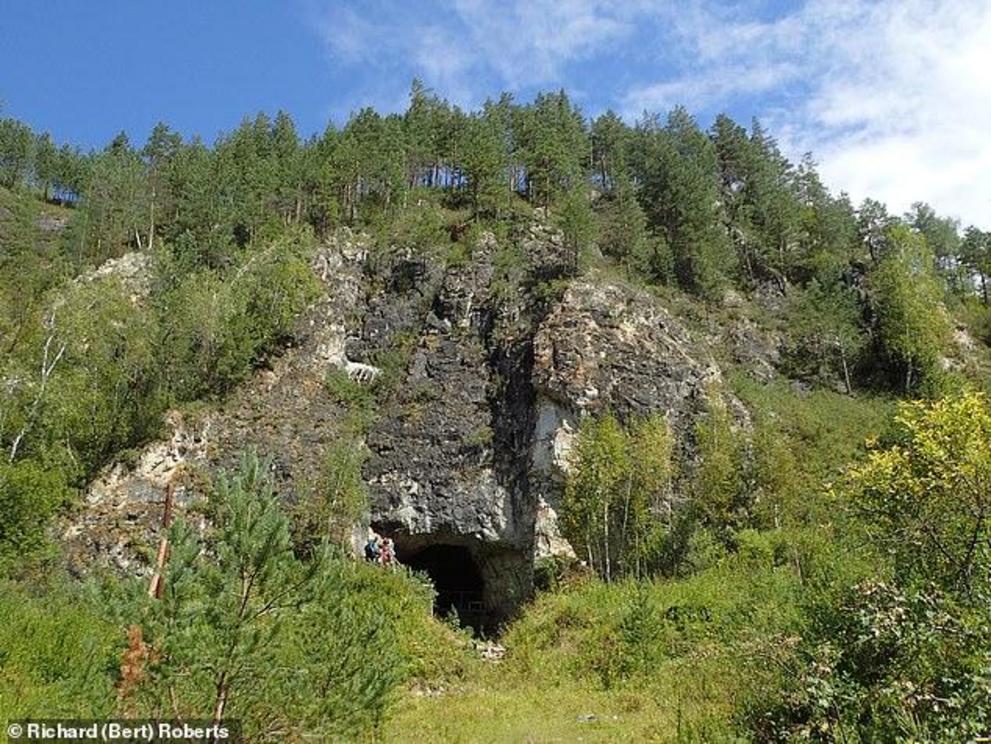 Much about the Denisovans remains a mystery; though their existence at the site is known from fragments of bone, teeth and now skull. Only four individual Denisovans had been identified previously, all from one cave in Siberia (pictured in this file photo
Much about the Denisovans remains a mystery; though their existence at the site is known from fragments of bone, teeth and now skull. Only four individual Denisovans had been identified previously, all from one cave in Siberia (pictured in this file photo
Fresh analysis of another fragment was measured and photographed by researchers from the Institut Jacques Monod.
Genomic analysis revealed it to be another part of the same bone, allowing researchers to recreate a picture for the entire bone.
Although not concrete, the researchers believe it belonged to an adolescent female, likely around 13.5 years old when she died, and was the little finger on her right hand.
The researchers, writing in the journal Science Advances, compared the new fragment to the phalanges of Neanderthals and anatomically modern humans.
Their analysis indicates it is very close to the latter, and less like the former.
However, the mystery deepens as to what Denisovans looked like as previous analysis discovered their jaw and teeth resembled a far more primitive shape.
These remnants were found on the Tibetan plateau, a known hotbed for ancient human remains 15,000 ft (4,500m) above sea level.
The researchers are intrigued by the Denisovan morphological mosaic and are seeking new skeletal remains to better characterise this 'third' human group.
Future research, they say, should account for the potential resemblance to pther species.
the authors write in the study: 'This finding calls for caution when identifying potential Denisovan postcranial skeletal remains beyond Denisova, as their morphology might be ambiguous or more similar to modern humans than to Neanderthals.'
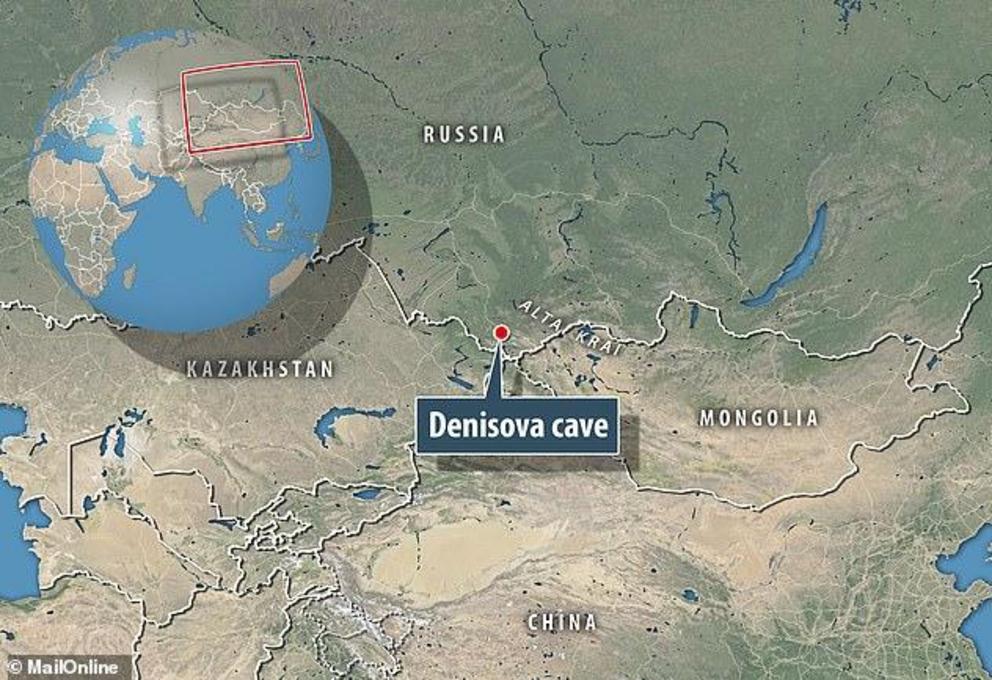 The new discovery from the Denisova cave (pictured) consists of a tiny bone fragment thought to belong to the same finger which was first found to be Denisovan
The new discovery from the Denisova cave (pictured) consists of a tiny bone fragment thought to belong to the same finger which was first found to be Denisovan
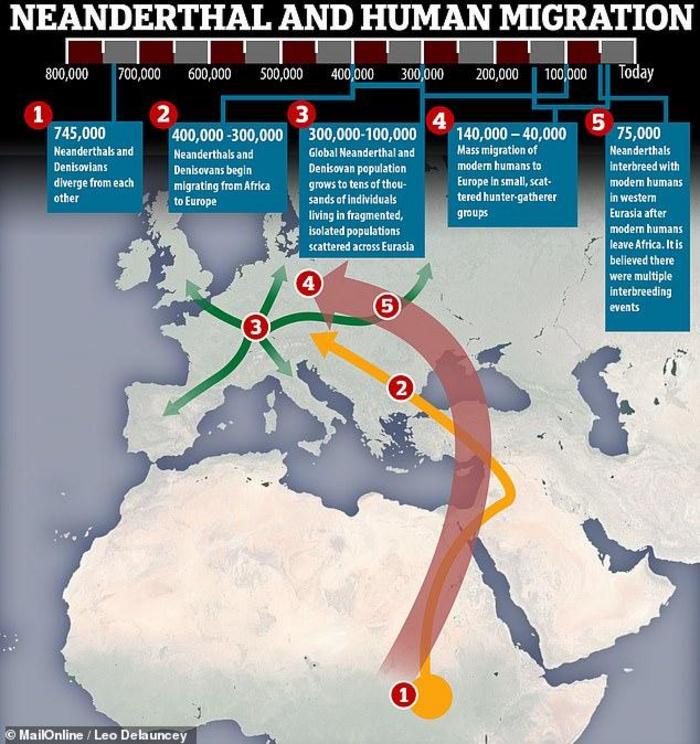 It is thought that the shared ancestors of Denisovans and Neanderthals, which are unknown in the fossil record, likely split from the ancestors of modern humans around 800,000 years ago
It is thought that the shared ancestors of Denisovans and Neanderthals, which are unknown in the fossil record, likely split from the ancestors of modern humans around 800,000 years ago
WHO WERE THE DENISOVANS?
Who were they?
The Denisovans are an extinct species of human that appear to have lived in Siberia and even down as far as southeast Asia.
Although remains of these mysterious early humans have only been discovered at one site - the Denisova Cave in the Altai Mountains in Siberia, DNA analysis has shown they were widespread.
Scientists were able to analyse DNA from a tooth and from a finger bone excavated in the Denisova cave in southern Siberia.
The discovery was described as 'nothing short of sensational.'
The individuals belonged to a genetically distinct group of humans that were distantly related to Neanderthals but even more distantly related to us.
How widespread were they?
Researchers are now beginning to find out just how big a part they played in our history.
DNA from these early humans has been found in the genomes of modern humans over a wide area of Asia, suggesting they once covered a vast range.
They are thought to have been a sister species of the Neanderthals, who lived in western Asia and Europe at around the same time.
The two species appear to have separated from a common ancestor around 200,000 years ago, while they split from the modern human Homo sapien lineage around 600,000 years ago.
Last year researchers even claimed they could have been the first to reach Australia.
Aboriginal people in Australia contain both Neanderthal DNA, as do most humans, and Denisovan DNA.
This latter genetic trace is present in Aboriginal people at the present day in much greater quantities than any other people around the world.
How advanced were they?
Bone and ivory beads found in the Denisova Cave were discovered in the same sediment layers as the Denisovan fossils, leading to suggestions they had sophisticated tools and jewellery.
Professor Chris Stringer, an anthropologist at the Natural History Museum in London, said: 'Layer 11 in the cave contained a Denisovan girl's fingerbone near the bottom but worked bone and ivory artefacts higher up, suggesting that the Denisovans could have made the kind of tools normally associated with modern humans.
'However, direct dating work by the Oxford Radiocarbon Unit reported at the ESHE meeting suggests the Denisovan fossil is more than 50,000 years old, while the oldest 'advanced' artefacts are about 45,000 years old, a date which matches the appearance of modern humans elsewhere in Siberia.'
Did they breed with other species?
Yes. Today, around 5 per cent of the DNA of some Australasians – particularly people from Papua New Guinea – is Denisovans.
Now, researchers have found two distinct modern human genomes - one from Oceania and another from East Asia - both have distinct Denisovan ancestry.
The genomes are also completely different, suggesting there were at least two separate waves of prehistoric intermingling between 200,000 and 50,000 years ago.
Researchers already knew people living today on islands in the South Pacific have Denisovan ancestry.
But what they did not expect to find was individuals from East Asia carry a uniquely different type.
